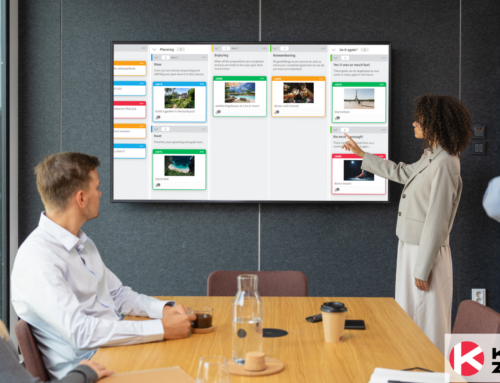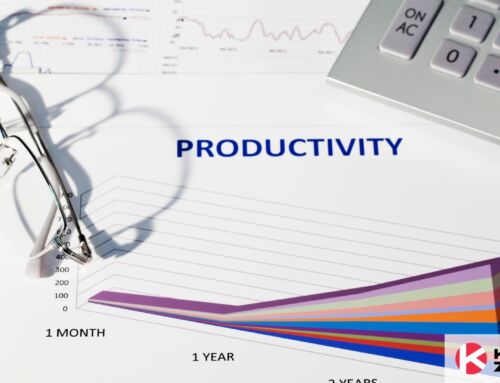
Building a web application is a challenging task that requires meticulous planning and attention to detail. Planning and managing the web app development process is easier when you have a clear step-by-step guide on your hands. In this article, you will find a comprehensive description of every web application development stage.
In addition, with the knowledge of the most common challenges that arise during the web app development process and the tips we provide on streamlining workflow, you can become a real expert in web app development and create high-quality digital solutions quickly and efficiently.
Key Takeaways:
- It is crucial to plan every step of the whole web app development process before you create a top-notch web application.
- To develop a web application, you should start by identifying what problem you want your web app to solve.
- When planning your web application development, you should estimate the cost of the necessary tech stack, manpower, and project timeline.
- You should also plan the UX/UI design, the app structure and layout, and then choose the web development tools you will use.
- During development, run simulations and conduct performance and security testing.
- Gather as much user feedback as possible to help you understand any areas for improvement.
Web App Development Process: Step-by-Step Guide
Custom web app development is crucial for gaining a competitive advantage and reaching wider audiences in many industries today. To create a top-notch web application, you need to carefully plan every step of the whole web app development process, not skip any stages, and implement best practices and methodologies.
Analysis
The custom web app development process is complex and usually takes months, and requires significant resources. Going in blind, without a clear plan and understanding of the market, is the biggest mistake newcomers usually make.
The first step is determining what problem your web application should solve. It is important to conduct thorough research on similar solutions and analyze each one in order to understand potential competitors’ strengths and weaknesses.
Based on the app’s core idea, you need to decide what type of web-based application you want to build. For example, progressive web applications require a different tech stack, development team, and timeframe than single-page apps. Another approach is to use a web app builder that can simplify this process, providing pre-built templates and components that align with your chosen app type.
Also, during this stage, it is recommended to start creating project documentation with a detailed list of objectives, business goals, and objectives the application has to help reach, and desired features and functionalities.
Planning
When you clearly understand the app’s core idea and conduct a thorough analysis of competitors, target audience, and market, it is time for the next stage. You and the development team need to define the project’s scope to prevent unnecessary spending and missed deadlines. Also, a list of deliverables that will be produced should be added to the documentation at this stage.
Next, you need to break down the development process into milestones and assign a clear timeline to each milestone. It will help you to track progress and avoid major setbacks.

Now come technical requirements. Based on your needs and preferences during the whole web app development process, the development team will be able to outline the overall web application architecture, including client-side and server-side components.
Then, it is time to choose a technology stack. The tech stack includes programming languages, web application frameworks, third-party services, and more technologies and tools that will be used during the development.
Based on the project timeline, tech stack, number of features, and development team structure, you need to come up with a cost estimation. To better understand this process, you can read this guide by product development company Clockwise Software.
Design
One of the most essential components of a web app’s success is UI/UX design. Establish visual identity, create an appealing user interface, and ensure that your design is responsive and works consistently on different devices, OS, and web browsers.
Then, come up with basic wireframes featuring basic web pages’ layout and overall app structure. Later, create more high-fidelity wireframes with more elements that will look exactly like a future product but without interactive features.
After wireframes are designed and approved by all stakeholders, it is time for an interactive prototype. It will allow users to click through interactive web pages and experience core features. Usability testing allows designers to receive feedback and iterate before actually building a user interface. After this stage, design specifications and style guides for future additions should be added to project documentation.
Development
Before actual coding starts, you need to establish a web development environment, which includes installing development tools like code editors or version control systems, setting up on-premise and web servers, databases, and dependencies, and creating repositories for code management. Now, front-end developers and back-end developers can start working on your application.
Front-end development usually starts with a basic structure for which HTML is used and then developers style the components with CSS (cascading style sheets). An absolute majority of front-end developers use JavaScript programming language, and web application frameworks and libraries from the JavaScript family, such as React, Angular, Node.js, and Vue.js.
Back-end development usually happens at the same time as front-end and involves web server setup, database integration, API (application programming interfaces) development, and creating server-side logic.
The most popular programming languages and frameworks used for back-end development are Python, Django, and Ruby on Rails. One of the most crucial aspects of this stage is database management. Software engineers need to find the most suitable database management system based on your business goals and app’s specifics.
After the web app development process is over, remember about the testing phase. You and your tech team need to ensure that each component functions correctly and that different modules and components work together seamlessly.
Simulate user interactions and conduct performance and security testing. In the end, you will be sure that you have a secure web application that performs correctly and is ready for launch.
Launch
After your web app has launched, collect as much user feedback as you can and use analytics tools to gather valuable insights on user interactions with your solution. Monitor the application’s performance, track errors, and pay attention to user engagement metrics. Remember about regular updates, feature enhancements, and patches.
If you follow these steps, you will be able to create a secure, feature-rich, and scalable web application. However, such a complex web application development process comes with many potential challenges and setbacks.
Common Challenges in Web App Development
To build web applications, you need to be aware of many intricacies of this complex process. Here are the most common challenges you may face.
Platform Compatibility Issues
Modern web apps need to be compatible with various devices, browsers, and screen sizes. Developing desktop or mobile apps separately is not cost-effective and will significantly affect your timeframe. To avoid compatibility issues, use web technologies created for cross-platform development, test your product on multiple devices and browsers, and implement responsive design practices.
Development Speed
The web app market is becoming more saturated and competitive every day, and even if you have a killer feature or original approach, there is no guarantee that tomorrow, somebody won’t launch a product that will occupy your niche. Development speed is crucial for gaining a competitive advantage.
The most expensive option for speeding up the web app development process is hiring more software engineers. A more complex but more cost-effective solution is implementing no-code or low-code platforms.
Building a Future-Proof Application
To ensure that your application stays relevant in the future, you need to follow several principles. Don’t use new technologies and tools until they have proven themselves. Use microservices or modular design for the app’s architecture. Implement robust security measures.
Integration Issues
Today, a majority of organizations use multiple digital solutions for their operations, so your app has to integrate with other tools seamlessly. To ensure this, you need to adopt an API-first development approach, implement comprehensive error handling and fallback mechanisms, use middleware to bridge the gap between your app and legacy systems, and use microservices architecture.
With this guide, you will be able to overcome these challenges and successfully build a web application of your dreams. However, to do it quicker and more efficiently, you may need some tips on streamlining workflows.
Tips for Streamlining the Web Application Development Process
Web application development life cycle can be easier if you leverage the following tips on how to reduce the time and effort spent on certain stages. Here are some of the key methodologies for streamlining web development workflow.
Embrace Agile Management
For interactive development, continuous feedback, and increased adaptability, use Agile methodologies, such as Kanban, Scrum, Crystal, or rapid development. It will allow you to break a project into smaller easily deliverable milestones, regularly gather feedback from users and stakeholders to improve your app, and foster communication and collaboration.
Automate Testing
In order to ensure that you have created not just a collection of web pages, but a functioning application, testing is crucial. Testing automation allows you to maintain code quality and catch issues early. With automated tools, you can quickly test separate components, third-party integrations, and the whole app’s functionality.
Standardize Coding Practices
For more efficient collaboration and app’s maintainability you need to establish and enforce clear coding standards in your team. Create style guides for writing clean and consistent code and creating comprehensive documentation. Use tools like Prettier to catch errors early and ensure consistency across a code database.
Leverage CI/CD
Continuous integration and continuous deployment pipelines help to automate the process of building, testing, and deploying code. It will enable you to make sure that the app’s code is always in a deployable state, integrate automated tests, and quickly deploy updates. You can host your pipelines on-premise or on cloud servers.
Use Project Management Tools
Effective project management is the key to keeping the web app development process on track and ensuring that the whole team is on the same page. Utilize project management tools such as a Kanban Zone to manage tasks, track progress, and assign responsibilities. Also, these tools are crucial for maintaining clean project documentation, which is extremely important.
Conclusion
Today, it is hard to imagine an organization without a web application. Combining the accessibility of websites and the interactivity and features of desktop and mobile applications, web-based apps are absolutely essential for reaching wider audiences.
Even if you have previous experience with native application development, handling your first web development project can be difficult. No matter where you are on your web app development journey, with our guide, you are now better equipped to build web applications, anticipate challenges, and make the whole journey more efficient.
This was a guest blog. Please review our guest blog disclaimer.
Learn to Work Smarter, Not Harder!
Get our top articles weekly.
Table Of Contents
Discover many more posts…







